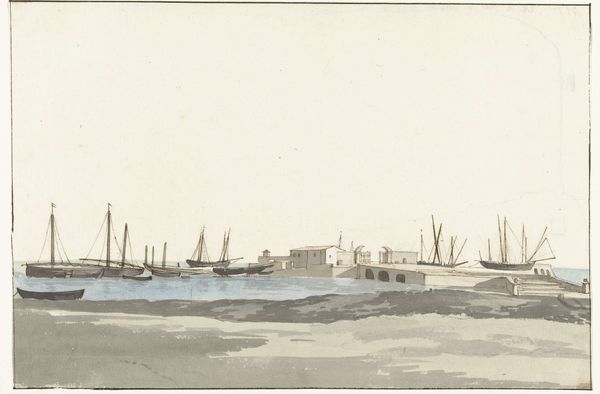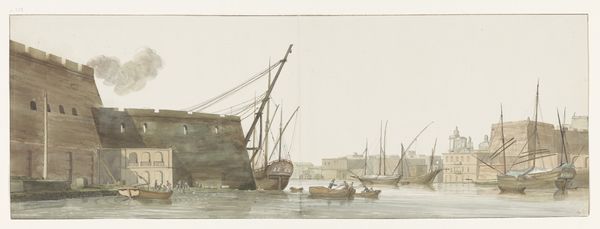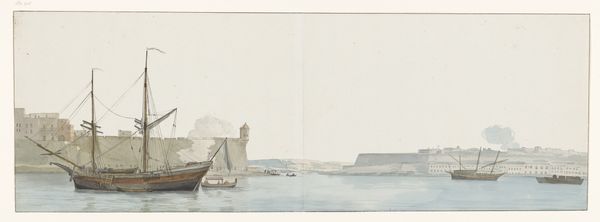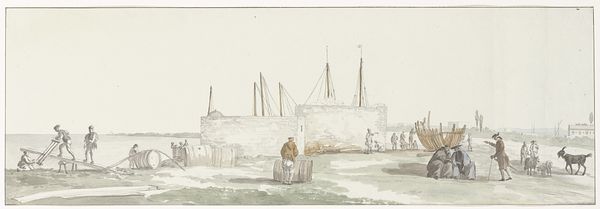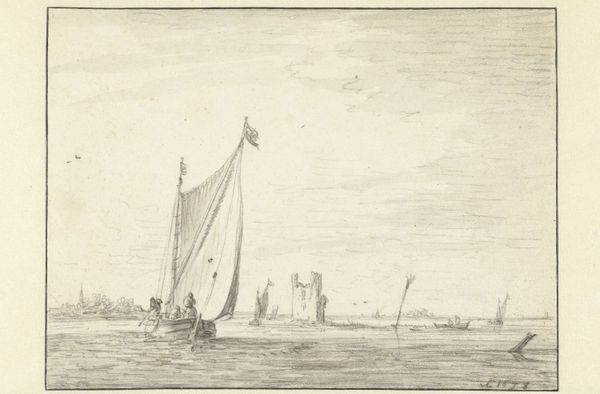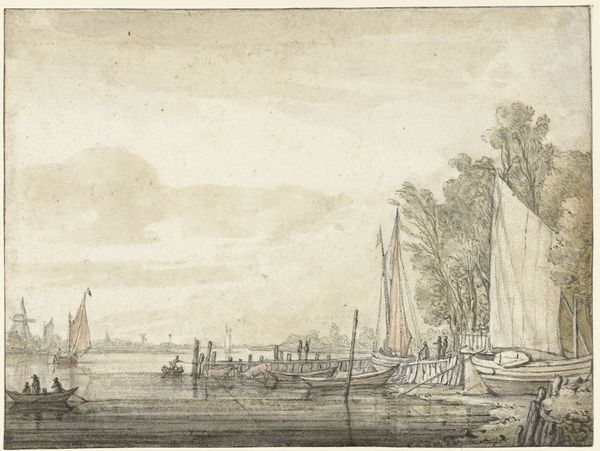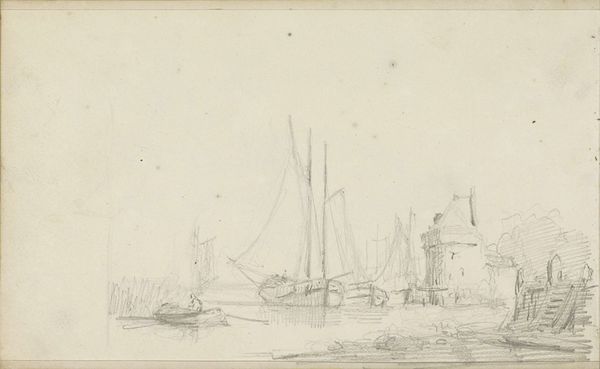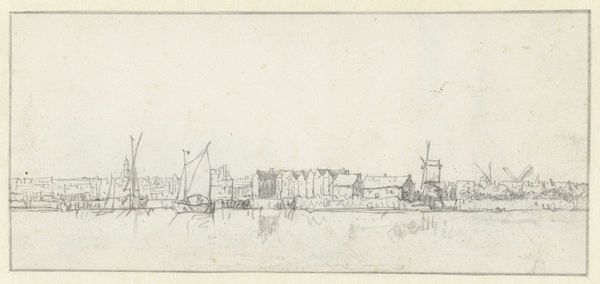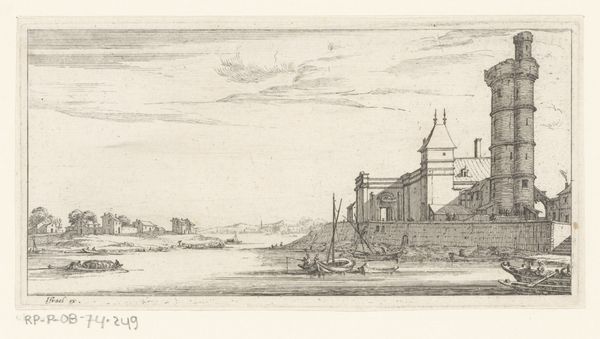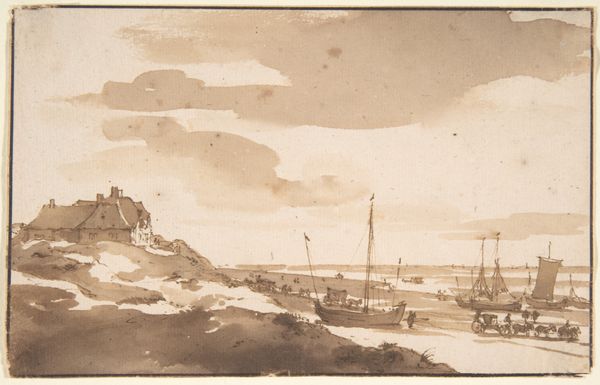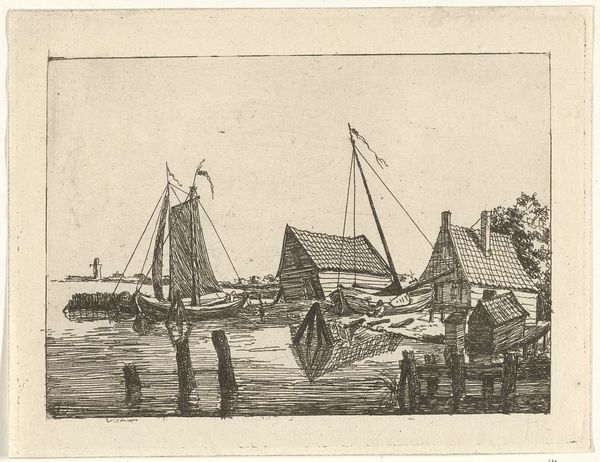
drawing, watercolor, pencil
#
landscape illustration sketch
#
drawing
#
neoclacissism
#
pencil sketch
#
landscape
#
watercolor
#
pencil
#
15_18th-century
#
cityscape
#
watercolour illustration
#
italian-renaissance
Dimensions: height 143 mm, width 275 mm
Copyright: Rijks Museum: Open Domain
Curator: It’s such a delicately rendered scene. I find this work, “View of the City of Molfetta on the Coast” by Louis Ducros from 1778, almost dreamlike in its simplicity. Editor: I agree. It has a haunting, almost melancholic atmosphere. The limited palette and the way the buildings in the background fade into the sky… it feels like a memory. What can you tell me about Ducros’s techniques here? Curator: Well, this drawing combines pencil and watercolor to really capture the light of the coastal town. He creates depth with these subtle washes, especially evident in the depiction of the sea and sky. It evokes Neoclassical ideals in its attempt to represent observed nature, almost objectively, and with the detail applied to the depiction of the built environment. But I think there's another layer here, about Italy as the Grand Tour's destination of choice for upper class travelers seeking classical education and personal development. Editor: That emphasis on objective observation is interesting. I'm struck by the boats in the foreground. You can see the means of production so clearly: the timbers, the way they’re beached for repairs, almost laid bare. It directs our attention to the labor that sustained this coastal town. How did fishing or trade intersect with the societal structures? This emphasis, to me, also gives us another interpretation related to landscape—as shaped not just by natural phenomenon but human interactions with materiality. Curator: It highlights a sense of liminality too, of transformation. That interplay is at the heart of understanding the cultural and political narratives inscribed upon landscapes, especially port cities like Molfetta. Editor: I appreciate how Ducros reveals both the idyllic and the pragmatic aspects of life in Molfetta, making this image more profound than a simple landscape sketch. It allows us to consider how cities become commodities, marketed through picturesque imagery while simultaneously operating as sites of labor and production. Curator: Ultimately, this drawing isn't just a record; it's a portal to understanding a very specific time, the late eighteenth century, and a very specific place within the broader narrative of European art and society. Editor: I’ll remember Ducros’s skill in revealing those interwoven layers the next time I see the working boats that shape coastal industries and their materials.
Comments
No comments
Be the first to comment and join the conversation on the ultimate creative platform.
